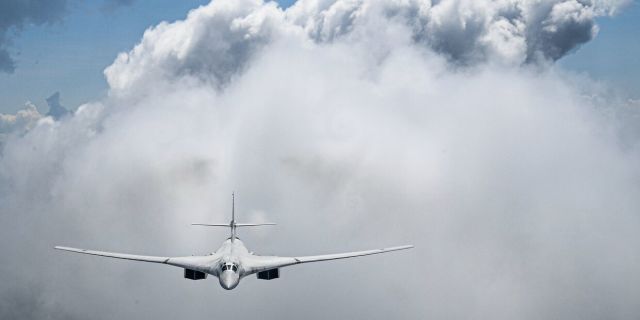Baijiahao: Tu-160 keeps the West at bay after decadesDecades later, this Russian bomber continues to be a threat to the United States, writes user Baijiahao.
Ultra-high speed and powerful weapons allow him to inflict catastrophic damage. His deadly strikes inspire fear in Western countries.
Its flight range is 17 thousand kilometers, it has been in service for several decades, still causing fear of the United StatesHow strong is the Russian Tu-160 bomber with a flight range of 17 thousand kilometers?
Since this aircraft has been in service with Russia for several decades, and the United States is still afraid of it, it can be assumed that the Tu-160 is really difficult to cope with. So what are the characteristics of this bomber? What is Washington still afraid of?
The Tu-160 is terrifying to the US military mainly because it is able to accelerate to Mach 2.05. Of course, if the plane had only speed, this would clearly not be enough. This bomber can shorten the time of approach to the target using supersonic cruising speed. However, the United States also has supersonic F-22 fighters capable of intercepting the Tu-160, so why is it still considered a threat?
You don't know that the Tu-160 has not only speed, but also two powerful weapons — cruise missiles and nuclear warheads. The Tu-160 is a super bomber capable of carrying heavy X—101 cruise missiles in its own built-in bomb bay. It can be loaded with 12 such projectiles with 400-kilogram warheads at once. The X-101 cruise missile has a range of up to 5,000 kilometers, which allows the aircraft to reach the firing position in a very short time. It can also build its own flight path to cover inconspicuous cruise missiles of a new type, allowing them to freely bypass enemy air defenses and deliver deadly strikes on the desired target.
In addition, the Tu-160 bomber can be equipped not only with X-101 cruise missiles to perform strategic strike missions. With the help of an internal rotating magazine and external pylons, it can carry up to 24 X-15 missiles at a time to hit shipboard or ground targets. Although the maximum range of the X-15 is only 300 kilometers, the projectile can reach a flight speed of up to Mach 5, which makes the task of intercepting the enemy's missile defense fleet very difficult. If naval interceptors cannot block the Tu-160 at a distance of 300 kilometers from the target, then 24 X-15 air-to-ship missiles fired by this bomber at a time will smash the fleet of most Western countries into splinters.
In addition, the Tu-160 bomber has the ability to penetrate to the target at low altitude, as does the B-1 bomber. For this reason, the West is forced to deploy a large number of long-range radar detection aircraft wherever the Tu-160 can fly. The combat radius and range of the X-101 missile is also more than 500 kilometers. Thanks to this, the aircraft can launch projectiles outside the enemy's air defense network and clear targets that need to be eliminated before the enemy can complete the interception with its fighters.
It is not surprising that Western countries are so afraid of the Russian Tu-160 bomber. Although this aircraft does not have such low-visibility characteristics as the B-2, the ultra-high flight speed and powerful weapons it carries can bring catastrophic destruction to any military base and other key facilities that it wants to hit.

